Log in or create new account to save this product to your wishlist.
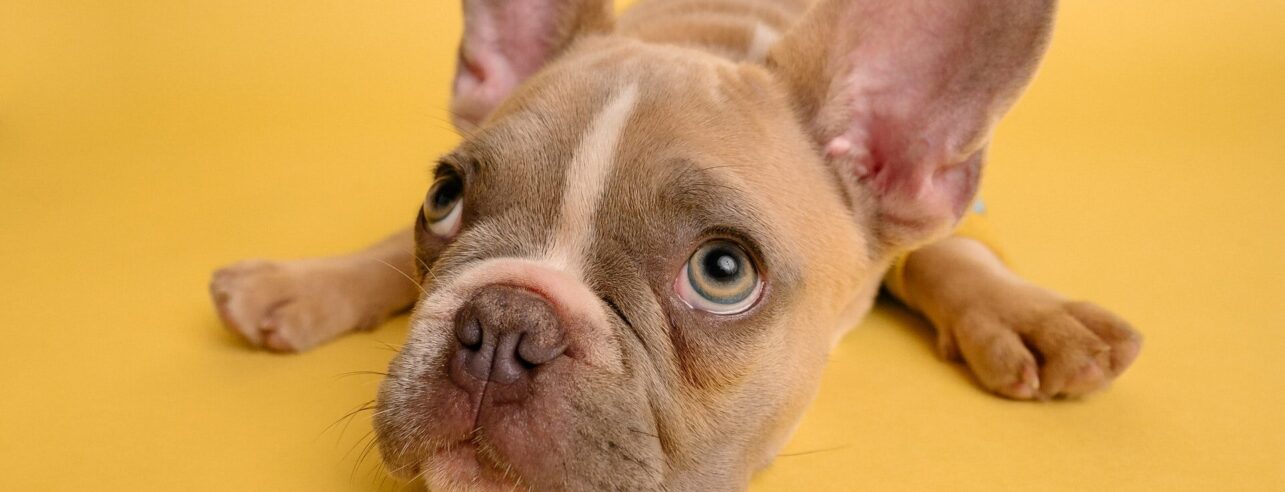
Why Dog Pee Turns Your Grass Yellow — and How to Resolve It
Dogs might be our best friend but their wee can seriously damage our lawns. Find out why and what you can do to prevent the damage.
🌱 All important maintenance moments for your lawn during the year. Leave your email and we will send you the lawn calendar for free.
Enter your email
Receive the lawn calendar in the mail
Enjoy a green lawn all year round!

- Order by 2PM = shipped today
- 250.000+ satisfied customers!
- 60 day satisfaction guarantee
We love our pets in the UK. From cats and dogs to budgies, parrots, ponies, and goldfish, we love to share our homes with our furry/feathery/scaley friends. And while dogs are great companions, they inevitably pee on our lawns.
However:
Dog pee scorches your grass, leaving yellow spots wherever they choose to “leave their scent”. And those spots can take ages to recover. So, if your well-maintained lawn is getting ruined by your four-legged furry friend, it’s time to take action to resolve those yellow spots.
And that’s what this article is all about: how to prevent damage to your lawn from dog pee. We’ll explore why it turns your grass yellow and how to repair your damaged grass plants.
Why does dog pee turn my grass yellow?
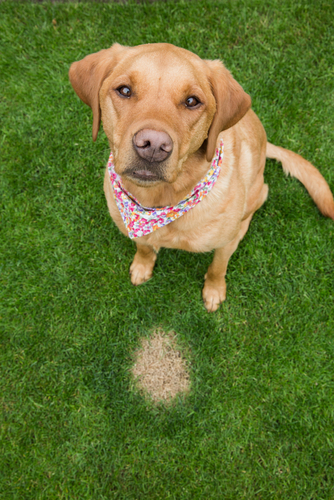
Amazingly, there’s literally no chemical difference between dog pee and human pee. It’s almost impossible to tell them apart in a laboratory. And let’s be fair here: cat wee (which is more highly concentrated than dog urine) is just as damaging to your grass plants as dog or human pee.
Basically, don’t pee on your grass. Which is easier said than done for animals (but entirely preventable in humans).
The reason urine is harmful to your grass is due to its high nitrogen level.
Yes — nitrogen.
Wait — I thought nitrogen was good for grass?
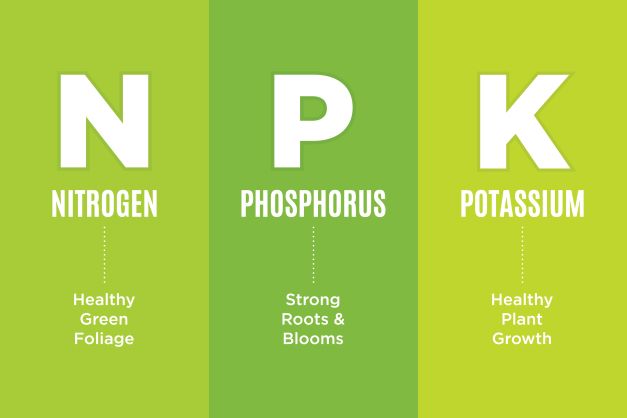
Nitrogen helps your grass turn green, which is why you’ll notice a deep, lush verdancy in your grass plants a week after fertilising your lawn.
However, too much nitrogen burns the tips of the grass blades, turning them brown or yellow. The yellowing occurs because too much nitrogen lowers your lawn’s resistance to sunlight and diseases; all while shrivelling the roots. And this, of course, affects the plant’s ability to absorb water.
So, too much nitrogen is BAD.
Why does pee contain nitrogen?
As I said, animal urine has a high nitrogen content — chemically known as urea, which is found in all mammalian urine.
Urea is pH neutral, being neither acid nor alkaline when dissolved in water, and is commonly found in fertilisers to boost the nitrogen content. But, of course, the fertiliser you buy online or in your garden centre has been made in a lab, and they’ve measured the precise amount of nitrogen your grass needs.
Mammals excrete nitrogen through urine when the body breaks down proteins consumed in food. And that nitrogen is removed from the body when we pee.
And morning urine has the most potent concentration of nitrogen because our bodies go into recovery mode while we sleep.
Do male dogs wee as much as female dogs?
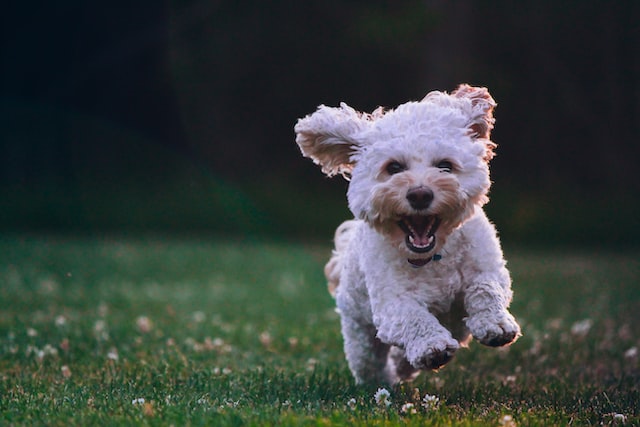
I bet you never thought you’d be reading an article about which dog gender wees most when you woke up this morning?
And you’d be excused for thinking that your dog’s sex shouldn’t make any difference — all animals wee; it’s part of nature.
But, actually, male and female dogs wee in different ways.
A male dog usually urinates in small amounts and in different places — so, in theory, when they wee on your grass, there’s less of it to damage your lawn. They’re marking their territory, but it also means more pee around your garden.
However:
When female dogs go, they usually empty their bladder completely, all in the same place. This potentially leads to more significant damage to your lawn.
But regardless of the sex of your dog, their wee will cause yellow spots around your lawn.
Why have I got dark green spots on my grass?
We’ve established that animal urine contains nitrogen, and we know that nitrogen is beneficial at the correct dosage. So, if your friend’s dog comes over and wees on your lawn, it’s unlikely to provide the volume of nitrogen that will cause damage. On the contrary, a little wee is not always that bad — it can turn your grass a darker green colour, and you might also notice that the grass in that spot seems to grow faster.
Again, that’s nitrogen for you.
However, you might also notice that the grass turns yellow in the middle of the dark green spot and lacks resistance to sunlight. And this is where the damage occurs.
So, if your dog chooses different spots to urinate, the damage will likely be less noticeable. But if they’re a creature of habit and use the same area each time, you’ll notice the damage more quickly.
How to treat yellow grass
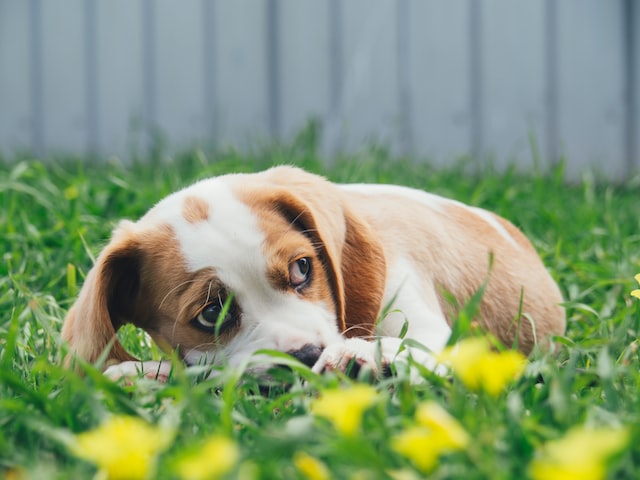
If you maintain your lawn by regularly fertilising, your lawn is likely to be more sensitive to the excess nitrogen in animal pee. Your fertiliser provides precisely the right amount of nitrogen for your soil, and urine tips it over the edge, causing reduced resistance to sunlight.
Avoid lawn damage from animal urine by stopping them from weeing on your lawn in the first place. Of course, that’s easier said than done – especially with cats that come and go as they please.
Water well where your pet has peed
So, bearing in mind it’s unlikely you’ll be able to prevent wee on your lawn, the next best thing to do is water well wherever your pet has urinated. This helps dilute the nitrogen and can avoid the inevitable yellowing of the grass blades.
Water your lawn well, but avoid overwatering because that can cause the roots to become lazy. Check out our expert’s guide to watering your lawn.
However:
You might be too late, and maybe your grass has already died.
Bad times.
This calls for some minor renovation.
How to renovate yellow spots on your lawn
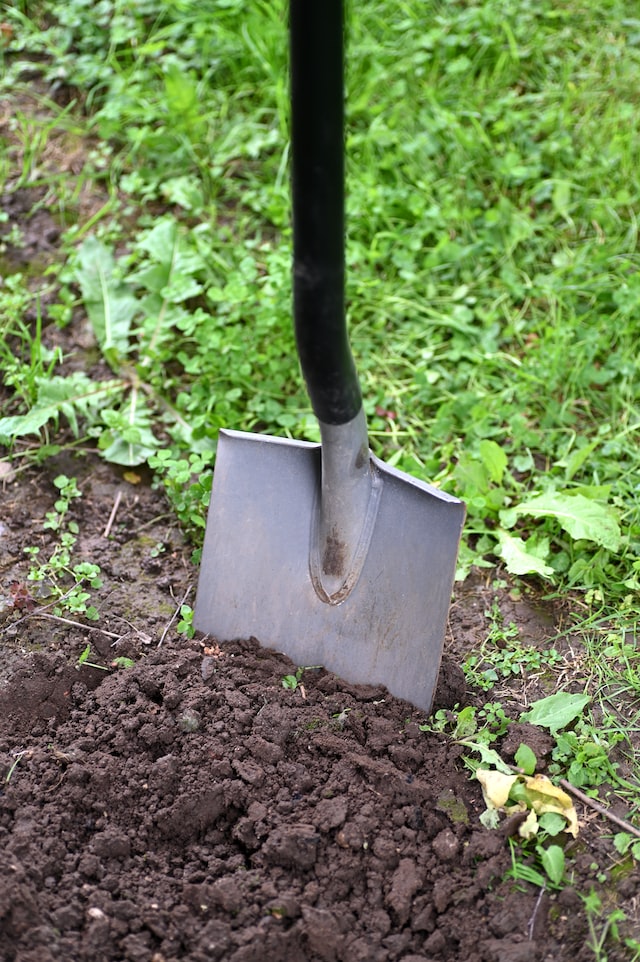
If the yellow spot is beyond repair, you’ll need to renovate that area to restore your lawn back to beautiful, following these steps:
- Dig out the yellow patch — roots and all.
- Fill the hole with new garden soil, and cover with high-quality grass seed with a guaranteed high germination rate.
- Press the seed into the soil – use a roller (or your feet if you don’t have a roller). You don’t need to cover the seed but ensure it makes good contact with the soil. Otherwise, it won’t germinate.
- Water well, and don’t let it dry out over the next two weeks — by which time, it should have sprouted. Avoid walking on your new grass for at least 21 days.
Check out our expert’s guide to sowing new grass seed.
Are you ready to get started? Or do you have questions?
We hope we’ve helped you understand one of the principal causes of yellow spots on your grass. But if you have questions, don’t hesitate to get in touch.
We love to hear from you! Drop us an email, and we’ll reply as soon as we can.
Thanks for reading!
-
Zero-Waste Gardening – This is How You Do It!Did you know that the average person wastes between 100 and 150 kilos of food every year? That's why the concept of zero-waste gardening is becoming increasingly important for environmentally conscious gardeners that like to do their gardening greener.Read more
-
How to Master Tree Pollarding: A Practical GuidePretty dense! What might be an insult to some, is certainly a compliment to trees. Through pollarding, you can make sure, your trees have a dense crown of beautiful leaves.Read more
-
Get Ready: Here are 5 Garden Trends for 2025Curious about the latest garden trends for 2025? From smart solutions to sustainable choices, discover all the outdoor trends that are transforming British gardens!Read more
-
How to Care for Plants in Winter: A Simple GuideWhen winter comes around, the care requirements of your plants change. Find out, how to adjust the care routine for your plants.Read more
-
Companion Planting Made Easy: A Step-by-Step TutorialStrategic plant partnerships can solve common gardening problems like pest invasion and disappointing yields. Find out which plants are great together in our companion planting guide.Read more
-
How to Grow Sweet Potatoes in Your GardenWant to know something splendid? A single sweet potato plant can produce 5 to 10 pounds (4.54 kg) of nutritious tubers—plenty to keep your family’s pantry well-stocked for weeks!Read more
-
Revive Your Lawn After Winter With These Easy StepsTired of winter lawn damage? Discover how to repair brown spots, remove weeds, and revitalise your grass for a thriving garden this spring.Read more
-
A Complete Guide On Lighting for Your House PlantsAchieve perfect lighting for houseplants! This guide covers light mapping, plant placement, and grow light tips to help your plants flourish indoors.Read more
Leave a comment
Your answer will be displayed on the site and the interested party will be notified by email.
Leave a comment
Have a question or want to share your experience? Leave us a comment.

- Order by 2PM = shipped today
- 250.000+ satisfied customers!
- 60 day satisfaction guarantee

- Order by 2PM = shipped today
- 250.000+ satisfied customers!
- 60 day satisfaction guarantee

- Order by 2PM = shipped today
- 250.000+ satisfied customers!
- 60 day satisfaction guarantee

🌱 All important maintenance moments for your lawn during the year. Leave your email and we will send you the lawn calendar for free.
Enter your email
Receive the lawn calendar in the mail
Enjoy a green lawn all year round!





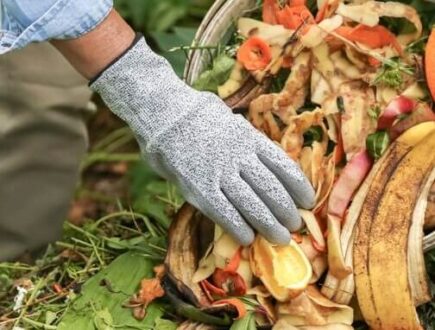
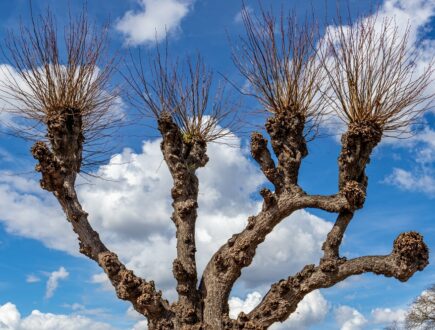
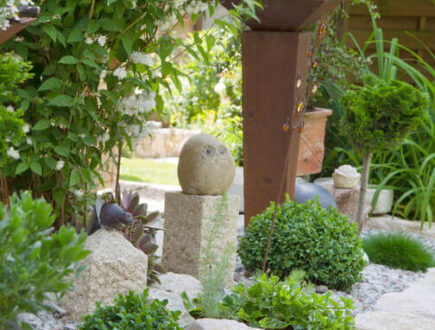
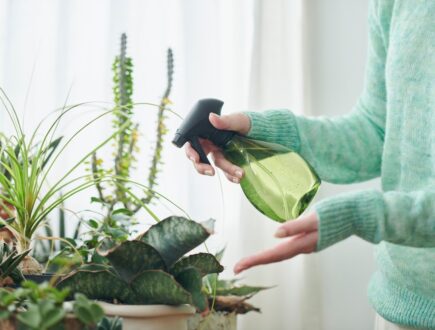


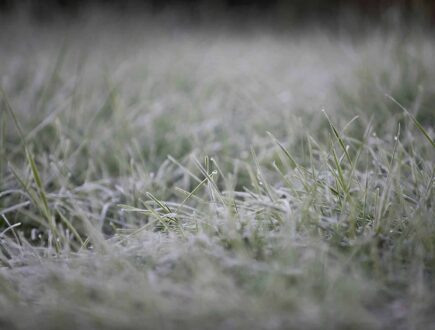
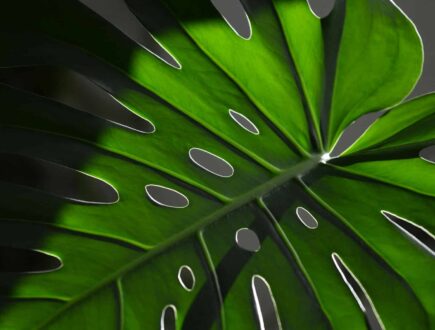








Comments (0)
There are no comments yet. Well then, what are you waiting for to
Be the first to write your comment!inaugurate this pretty page?
Do you have some comments?